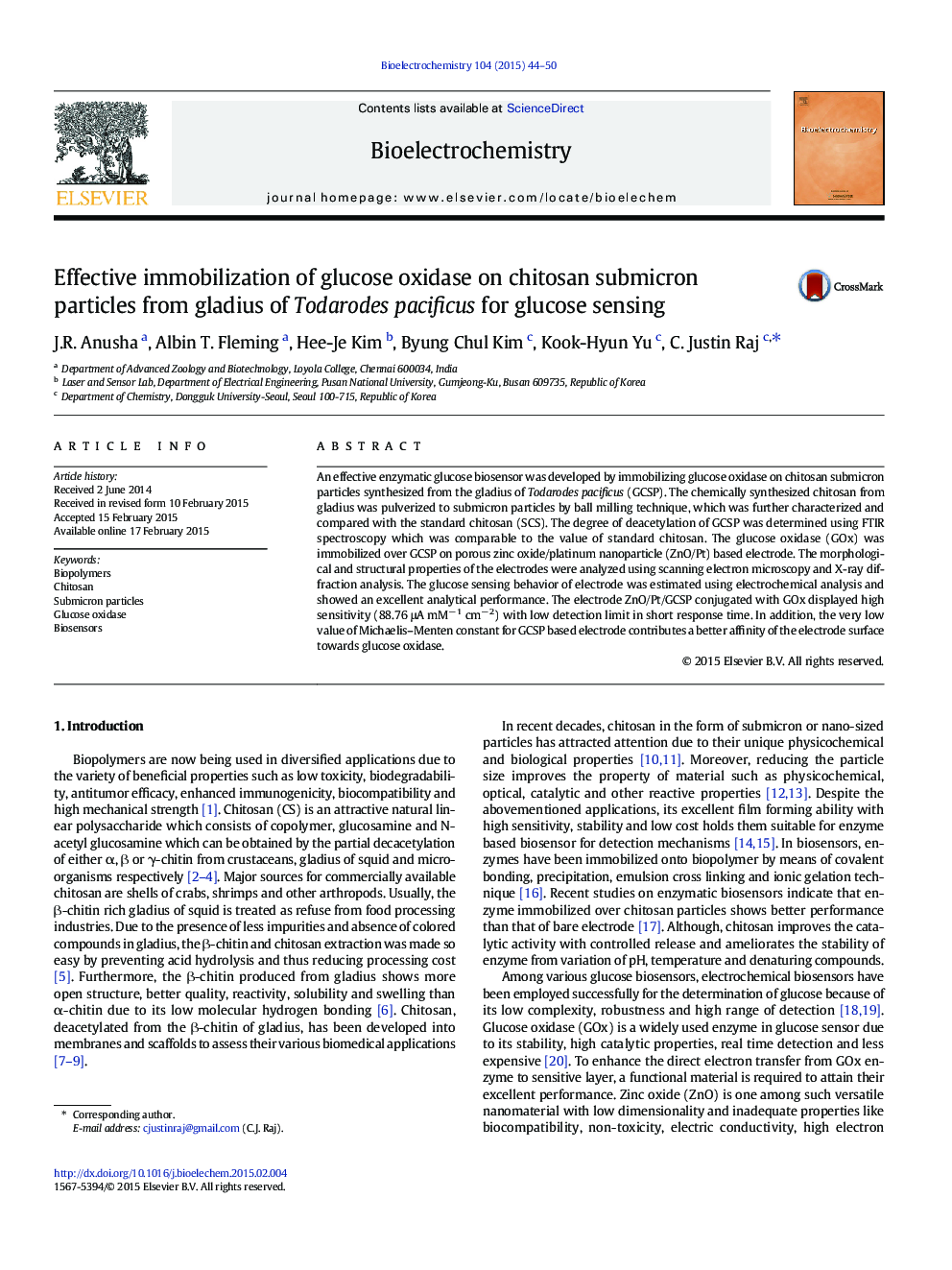| Article ID | Journal | Published Year | Pages | File Type |
|---|---|---|---|---|
| 1267789 | Bioelectrochemistry | 2015 | 7 Pages |
•Effective immobilization of GOx by chitosan submicron particles for amperometric glucose biosensor•Chitosan submicron particles from gladius of Todarodes pacificus provide good biocompatibility for enzyme.•Biosensor showed excellent electrochemical performance with high sensitivity in short response time.•Low detection limit and Michaelis–Menten constant indicates high enzyme affinity.
An effective enzymatic glucose biosensor was developed by immobilizing glucose oxidase on chitosan submicron particles synthesized from the gladius of Todarodes pacificus (GCSP). The chemically synthesized chitosan from gladius was pulverized to submicron particles by ball milling technique, which was further characterized and compared with the standard chitosan (SCS). The degree of deacetylation of GCSP was determined using FTIR spectroscopy which was comparable to the value of standard chitosan. The glucose oxidase (GOx) was immobilized over GCSP on porous zinc oxide/platinum nanoparticle (ZnO/Pt) based electrode. The morphological and structural properties of the electrodes were analyzed using scanning electron microscopy and X-ray diffraction analysis. The glucose sensing behavior of electrode was estimated using electrochemical analysis and showed an excellent analytical performance. The electrode ZnO/Pt/GCSP conjugated with GOx displayed high sensitivity (88.76 μA mM− 1 cm− 2) with low detection limit in short response time. In addition, the very low value of Michaelis–Menten constant for GCSP based electrode contributes a better affinity of the electrode surface towards glucose oxidase.
Graphical abstractFigure optionsDownload full-size imageDownload as PowerPoint slide
